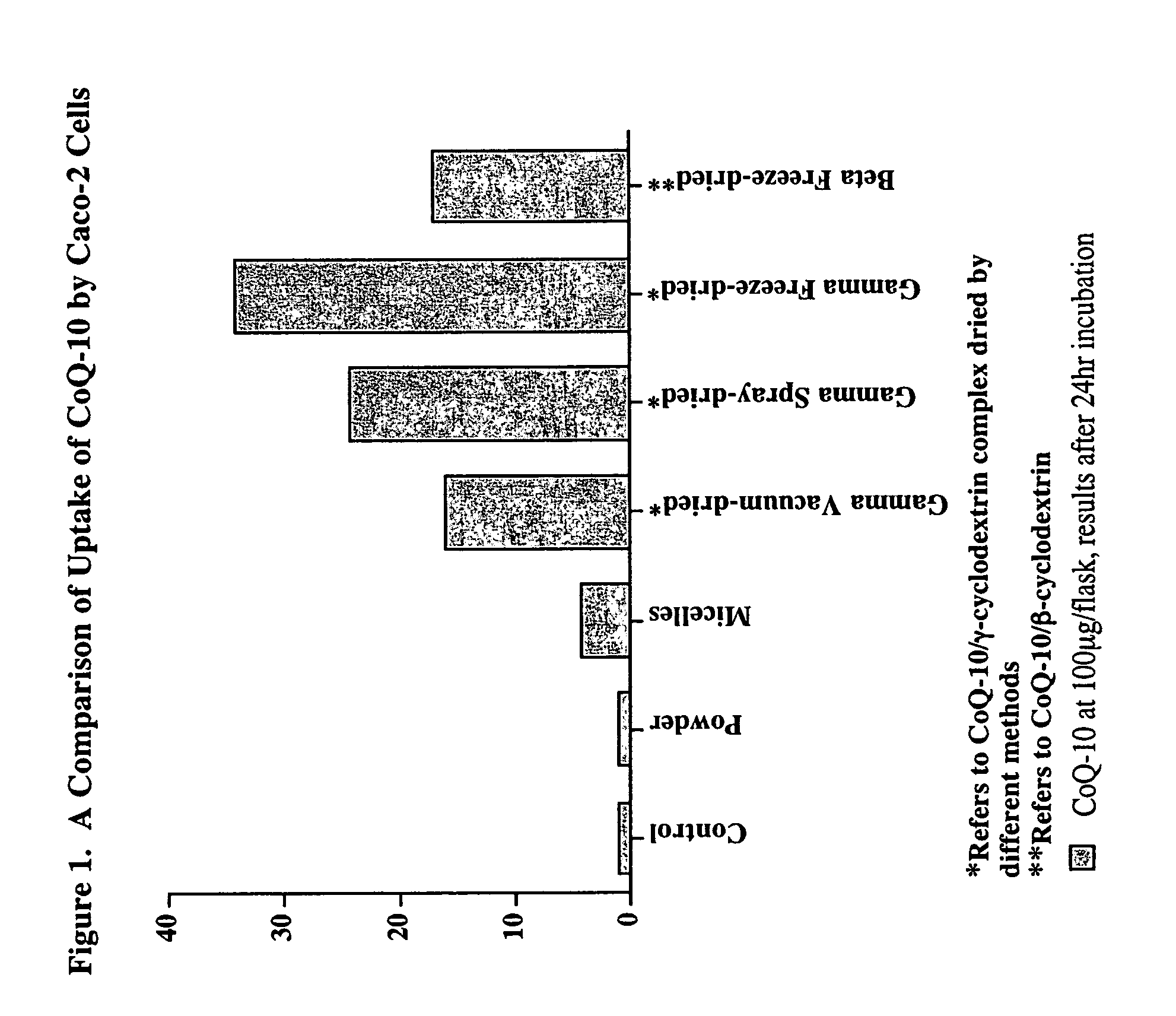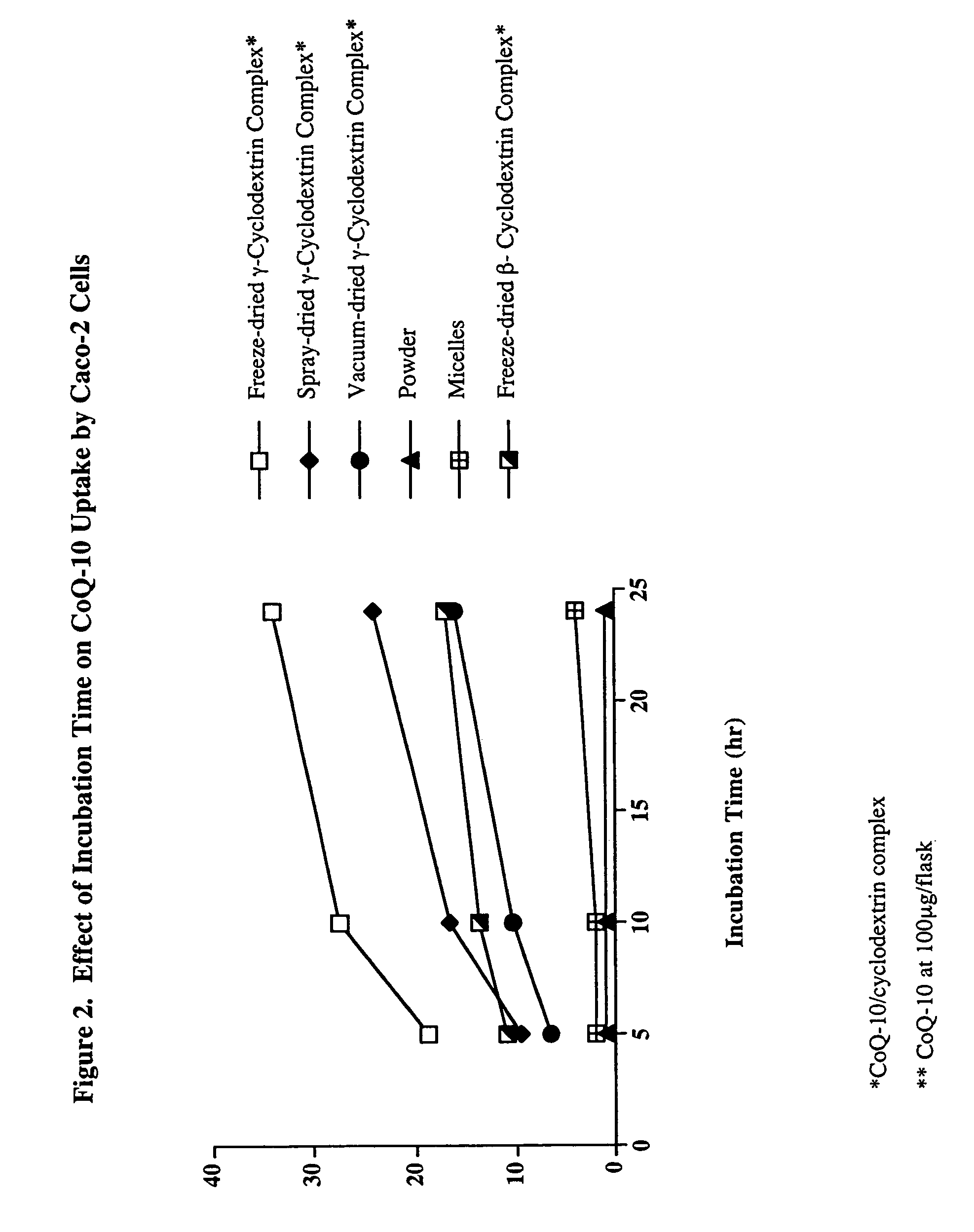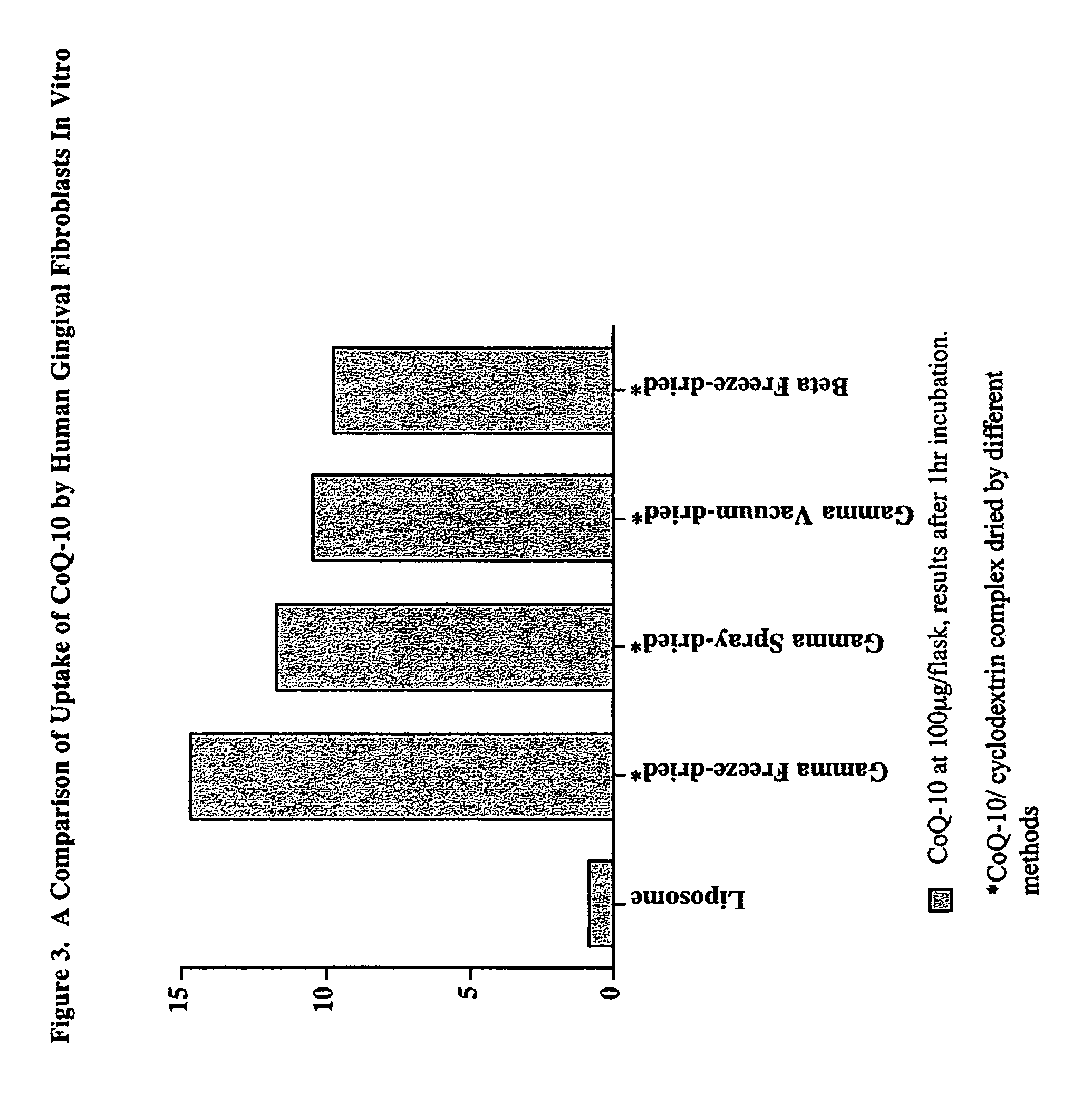Highly bioavailable coenzyme Q-10 cyclodextrin complex
- Summary
- Abstract
- Description
- Claims
- Application Information
AI Technical Summary
Benefits of technology
Problems solved by technology
Method used
Image
Examples
example 1
In Vitro Uptake of CoQ-10 in Caco2 Cells
[0027]The uptake of CoQ-10 from the cyclodextrin complex dried by different methods was compared to commercially available CoQ-10 powder (99% pure, used in hard capsules) and CoQ-10 powder incorporated into mixed micelles, simulating the digestive process.
[0028]The mixed micelles were prepared by the method of Garrett et al. (1999) using sodium taurocholate (bile salt), mono-acylglycerol, oleic acid, phosphatidyl choline, lysophosphatidylcholine, and CoQ-10 in phosphate buffered saline (PBS). The CoQ-10 / cyclodextrin complexes were dispersed in PBS. The stock solutions contained 30 mg CoQ-10 / 10 ml.
Cellular Uptake
[0029]The cellular uptake of CoQ-10 as a function of media concentration and exposure time was determined based on the method of Garrett et al. (1999). Caco-2 (ATCC, Rockville, Md.) cells were maintained in high glucose DMEM with 15 mM HEPES and 10% heat inactivated fetal bovine serum, nonessential amino acids, glutami...
example 2
In Vitro Uptake of CoQ-10 in Human Gingival Fibroblast Cells
[0036]Normal human gingival cells were used for the uptake studies. HGF-1 cells (ATCC, Rockville, Md.) were maintained in DMEM with 10% fetal bovine serum, glutamine, and pyruvate in a humidified atmosphere at 10% CO2 and 37° C. The cells were allowed to reach confluency in 25 cm2 flasks before the start of the experiment.
[0037]The stock test samples, prepared as in Example 1, were diluted in the culture medium for the experiment. CoQ-10 incorporated into liposomes was used for comparison. The CoQ-10-liposome stock solution was prepared using phosphatidylcholine and CoQ-10 in PBS. The components were dissolved in hexane and ethanol, mixed at specified concentrations (5% CoQ-10:95% phosphatidylcholine) and the solvent was evaporated using N2. The residue was sonicated in PBS to obtain the liposomes.
[0038]The monolayers were washed with PBS before adding the test samples at known CoQ-10 concentration (100 μg / flask). The contr...
PUM
| Property | Measurement | Unit |
|---|---|---|
| Molar ratio | aaaaa | aaaaa |
Abstract
Description
Claims
Application Information
 Login to View More
Login to View More - R&D
- Intellectual Property
- Life Sciences
- Materials
- Tech Scout
- Unparalleled Data Quality
- Higher Quality Content
- 60% Fewer Hallucinations
Browse by: Latest US Patents, China's latest patents, Technical Efficacy Thesaurus, Application Domain, Technology Topic, Popular Technical Reports.
© 2025 PatSnap. All rights reserved.Legal|Privacy policy|Modern Slavery Act Transparency Statement|Sitemap|About US| Contact US: help@patsnap.com



